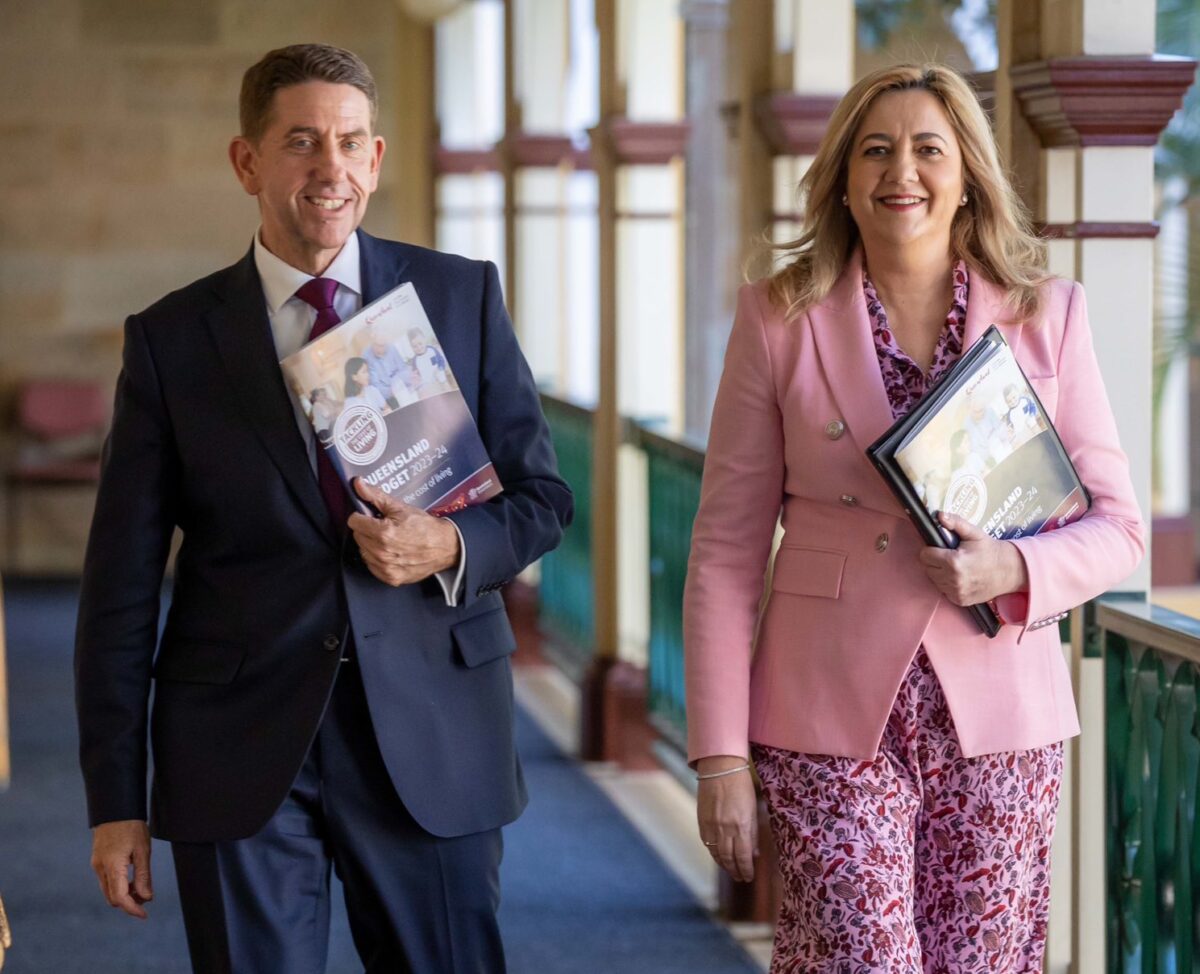Queensland’s Palaszczuk government has today handed down its 2023-24 Budget, which included $7 billion of funding for its two pumped hydro storage projects and $5.465 billion towards the energy transition via the state’s six energy corporations.
Overall, the government has allocated $19 billion over the next four years to help realise its Queensland Energy and Jobs Plan. This funding tranche sits within an $89 billion four-year infrastructure program – though it is worth noting this also includes water, 2032 Olympic games, as well as state housing and school infrastructure.
The Queensland government has been pushing its model of state-owned energy infrastructure for some time now – something which sits in contrast to many other states, including its neighbour New South Wales, which has a highly privatised energy system. In March, NSW elected a new Labor government that campaigned on keeping more energy assets in state hands, meanwhile Victoria recently opted to put transmission back into the state government’s remit.
Which is to say, Labor state governments are turning to public ownership to drive the energy transition and assuage community concerns and issues around social license. In the Queensland government’s budget announcements, Treasurer Cameron Dick noted his government will also take action “to enshrine into law public ownership of Queensland’s electricity assets.”
Building from this philosophy, the state government will rely heavily on its six publicly-owned energy entities to transition the state’s coal-reliant energy system. Queensland’s public entities include Energy Queensland, Powerlink Queensland, Stanwell Corporation, CleanCo, CS Energy, and the newly formed Queensland Hydro – which is charged with delivering the state’s publicly-owned pumped hydro projects.
$7 billion for pumped hydro
The Queensland government has budgeted an additional $6 billion for the Borumba Pumped Hydro Energy Storage project. Estimated to cost $14.2 billion overall, the 2 GW project is to be located west of Gympie and is targeting completion by 2030.
The budget allocated the remaining $1 billion to the Pioneer-Burdekin project, west of Mackay. At 5 GW/120 GWh, the Pioneer-Burdekin will be the largest pumped hydro storage system in the world, the Queensland government says. Little detail was included on what precisely the $1 billion will fund, but given this is the larger project, it seems likely it will go towards studies and planning.
Other utility-scale commitments
The government’s budget website says it has put $1.06 billion towards transmission project CopperString 2032, a 1000‑kilometre transmission line from Townsville to Mount Isa set to connect the North West Minerals Province to the National Electricity Market.
Somewhat confusingly, the government’s media release cites a $594 million investment from Powerlink into CopperString and it is not clear whether this sits within the billion dollar umbrella or additional to it.
Another state-owned entity, CleanCo, has attracted $500 million for its 2.3 GW portfolio of wind and solar projects in Central Queensland. On top of that, CleanCo has been providing funding to install a 250 MW big battery at Swanbank Power Precinct near Ipswich.
Meanwhile, $673 million will go to Stanwell to develop the Wambo and Tarong West Wind Farms and large-scale batteries, and $312.1 million for CS Energy to also invest in wind and battery projects.
Public transmission company Powerlink will invest $193.8 million to support the connection of major renewable projects to the grid, including the proposed 2 GW Borumba pumped hydro energy storage and Australia’s largest onshore wind project, the 1 GW MacIntyre Wind Precinct south-west of Warwick.
Energy Queensland will continue the roll-out of network batteries with $150 million allocation to that end.
Residential energy rebates
The Queensland government has lent into the provision of household electricity rebates in this budget, providing all Queensland households with $550, while concession holders will receive an additional $150 energy payment.
Treasurer Dick has described Queensland’s energy rebates as the most generous in Australia, and while they will undoubtedly be welcomed by households, some in the industry warn against such measures.
EY Port Jackson Partner Blair Comley, for instance, says blanket subsides can lead to increased consumption – which is ultimately counterproductive to reaching climate targets.
Coal royalties windfall
The Queensland government last year introduced an additional three tiers to its coal royalty structure, and this alone injected $10.5 billion into the state’s budget.
These extra royalties have been cited as a key reason Queensland was able to deliver a $12 billion surplus.
Coal lobbies ran a multimillion-dollar champaign against the move, but given the massive reward it isn’t difficult to understand why the Queensland government “stood its ground” and defended the changes.
“Those coal companies will earn four times as much in revenue as Queenslanders make in royalties,” the Treasurer said.
This content is protected by copyright and may not be reused. If you want to cooperate with us and would like to reuse some of our content, please contact: editors@pv-magazine.com.









3 comments
By submitting this form you agree to pv magazine using your data for the purposes of publishing your comment.
Your personal data will only be disclosed or otherwise transmitted to third parties for the purposes of spam filtering or if this is necessary for technical maintenance of the website. Any other transfer to third parties will not take place unless this is justified on the basis of applicable data protection regulations or if pv magazine is legally obliged to do so.
You may revoke this consent at any time with effect for the future, in which case your personal data will be deleted immediately. Otherwise, your data will be deleted if pv magazine has processed your request or the purpose of data storage is fulfilled.
Further information on data privacy can be found in our Data Protection Policy.